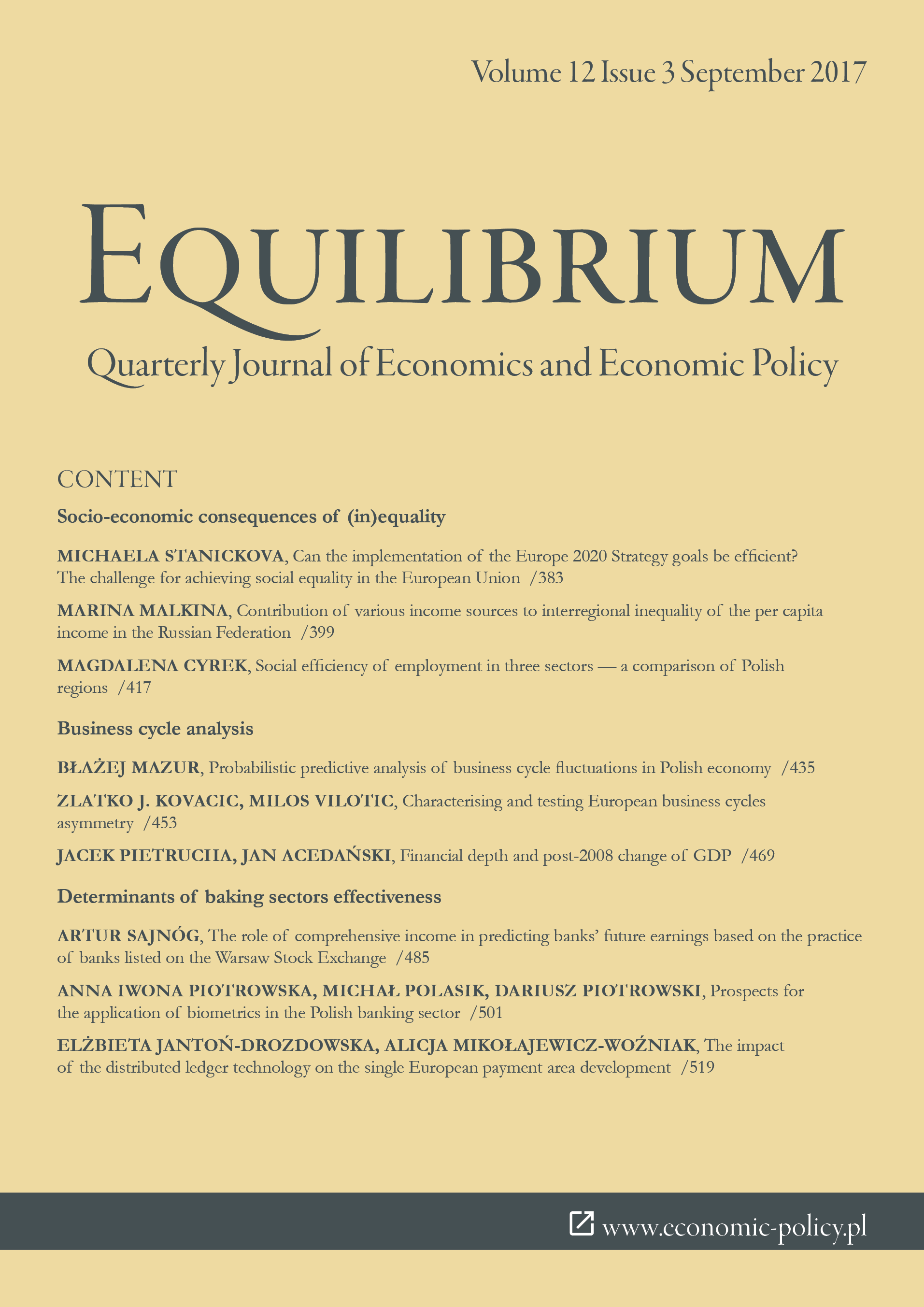The impact of the distributed ledger technology on the Single Euro Payments Area development
The impact of the distributed ledger technology on the Single Euro Payments Area development
Author(s): Elżbieta Jantoń-Drozdowska, Alicja Mikołajewicz-WoźniakSubject(s): Economy, Business Economy / Management, ICT Information and Communications Technologies
Published by: Instytut Badań Gospodarczych
Keywords: SEPA; blockchain; distributed ledger technology; virtual currencies; financial integration;
Summary/Abstract: The year 2016 ended the period of the migration from national payment services to the Single Euro Payments Area (SEPA) instruments. At the same time, however, it has become apparent that some problems remained unresolved. Overcoming them requires finding suitable technological solutions. The potential of the distributed ledger technology (DLT) is currently being explored by the financial sector and its implementation may affect the SEPA schemes in a variety of dimensions. Purpose of the article: The aim of the article was to determine the potential impact that the DLT transfer to the banking sector may have on the functioning of the SEPA in the future. The paper presents SEPA’s assumptions and the current status of the project as well as the DTL’s concept. It describes the technology transfer implications for the banking industry and compares the SEPA schemes currently operating with those based on the DLT. It also indicates the opportunities and threats that are the consequence of the new technology implementation and examines their significance for the SEPA. Methods: In the article, a qualitative analysis is supplemented with a quantitative one. Elements of descriptive statistics have been used to characterize the functioning of the main pillars of the SEPA schemes. The final conclusions are based on the comparative analysis of the SEPA schemes and developed DLT applications. Findings & Value added: The existing problems might be solved by supplementing the SEPA payment schemes currently operating with the applications based on the DLT. The systems that will be subsequently developed will provide the required real-time processing and a global reach. They will also extend the functionalities of the SEPA schemes with the ability to transfer other currencies. The implementation of this technology will result not only in new financial products but, first of all, in creating new business models. Consequently, we may expect a modification of the currently operating SEPA schemes, based on their supplementation rather than total replacement in a short time frame.
Journal: Equilibrium. Quarterly Journal of Economics and Economic Policy
- Issue Year: 12/2017
- Issue No: 3
- Page Range: 519-535
- Page Count: 17
- Language: English

